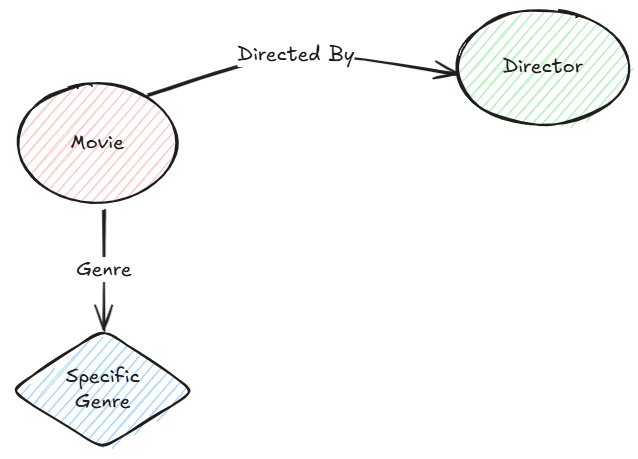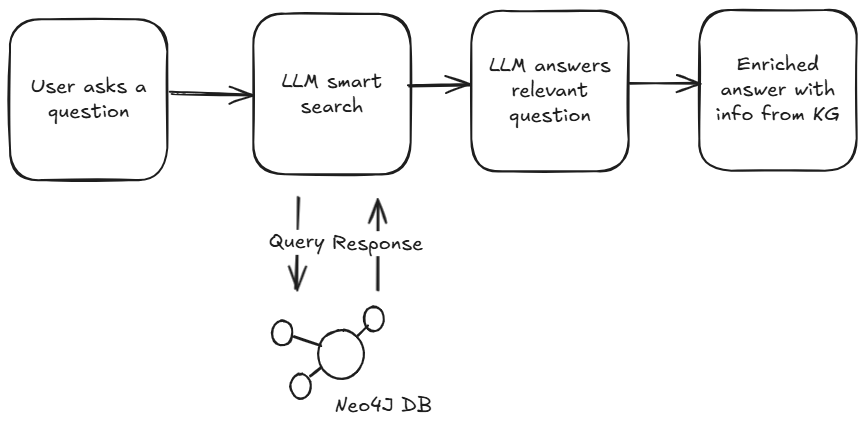Welcome back to our #75DaysofGenerativeAI series. In our last post, we introduced the concept of agents and built chatbot agents. In today’s post, we introduce Knowledge Graphs and why they have suddenly become the buzzword for multi-agent systems.
What is a Knowledge Graph?
Knowledge graphs are powerful tools that help us make sense of complex information. By organizing data as interconnected entities and relationships, they create a network of knowledge that mirrors real-world complexity. Think of it like a map that shows how different concepts are connected. For example, a knowledge graph for a movie database might link actors to their films, directors to their movies, and genres to related films. This structure enables more accurate and informative queries, making it a game-changer for AI applications.
Structure and Components
Knowledge graphs consist of:
Nodes: Represent entities like people, places, events, or concepts
Edges: Define relationships between entities
Properties: Describe characteristics of entities using categorical or numerical values
Schema: An ontology that defines abstract classes and relations
Core Characteristics
Three key features distinguish knowledge graphs:
Graph-Based Organization: Unlike traditional databases, information is structured as an interconnected network.
Semantic Understanding: Meanings and relationships are explicitly encoded for programmatic use.
Dynamic Nature: They evolve and adapt as new information becomes available.
Typical Storage Solutions for Knowledge Graphs
Knowledge graphs (KGs) require specialized storage solutions that can efficiently manage the complex relationships and large-scale data they represent. Below are some of the most commonly used storage systems for knowledge graphs:
Graph Databases
Graph databases are the most popular and optimized storage solutions for knowledge graphs due to their ability to natively store and manage relationships between entities. These databases are designed to handle highly interconnected data structures, making them ideal for KGs.
Neo4j: One of the most widely used graph databases, Neo4j stores data as nodes, edges, and properties. It supports Cypher, a powerful query language designed for graph traversal and relationship queries
Amazon Neptune: A fully managed graph database service that supports both RDF (Resource Description Framework) and property graph models, allowing flexibility in how knowledge is represented
Microsoft Azure Cosmos DB: A multi-model database that supports graph data via Gremlin, a graph traversal language, making it suitable for storing large-scale knowledge graphs
Symbiotic Relationship between KGs and GenAI
The integration of KGs with GenAI is symbiotic:
KGs Enhance GenAI: By providing structured knowledge and reasoning capabilities, KGs improve the accuracy, consistency, and relevance of generative outputs
GenAI Enhances KGs: GenAI can assist in building and maintaining KGs by automating data extraction from unstructured sources, predicting new relationships, and updating the graph with new information.
Key Contributions of Knowledge Graphs to Generative AI
Enriched Data Understanding
Knowledge graphs provide a structured framework that links entities and their relationships, which helps GenAI systems understand both structured and unstructured data more deeply. This allows GenAI to produce more contextually relevant outputs by mapping entities and their interrelations
Improved Query Results
By leveraging the semantic capabilities of knowledge graphs, GenAI can better interpret user queries, especially those with nuanced meanings. This enhances the system’s ability to handle complex queries and deliver precise results based on the relationships between data points
Minimizing Hallucinations
One of the major challenges in GenAI is its tendency to produce "hallucinations"—plausible but incorrect information. Knowledge graphs help mitigate this issue by grounding the AI’s outputs in structured, verified data, ensuring more reliable and accurate results
Personalization and Precision
Knowledge graphs allow for highly personalized content generation by maintaining detailed user profiles. For example, in education or recommendation systems, KGs can guide GenAI to create tailored outputs based on individual preferences or past interactions
Supporting Retrieval-Augmented Generation (RAG)
In Retrieval-Augmented Generation (RAG), knowledge graphs can be combined with vector embeddings to enhance information retrieval from large datasets. This approach allows GenAI systems to retrieve relevant information dynamically, improving both the quality and relevance of generated content
Cross-Domain Knowledge Transfer
The integration of KGs with GenAI enables cross-domain knowledge transfer by allowing AI models to incorporate domain-specific facts and reasoning into general-purpose language models like GPT-4 or LLaMA
In summary, knowledge graphs significantly enhance generative AI's ability to understand complex data, generate accurate outputs, and provide personalized experiences across various domains such as education, healthcare, and customer service.




